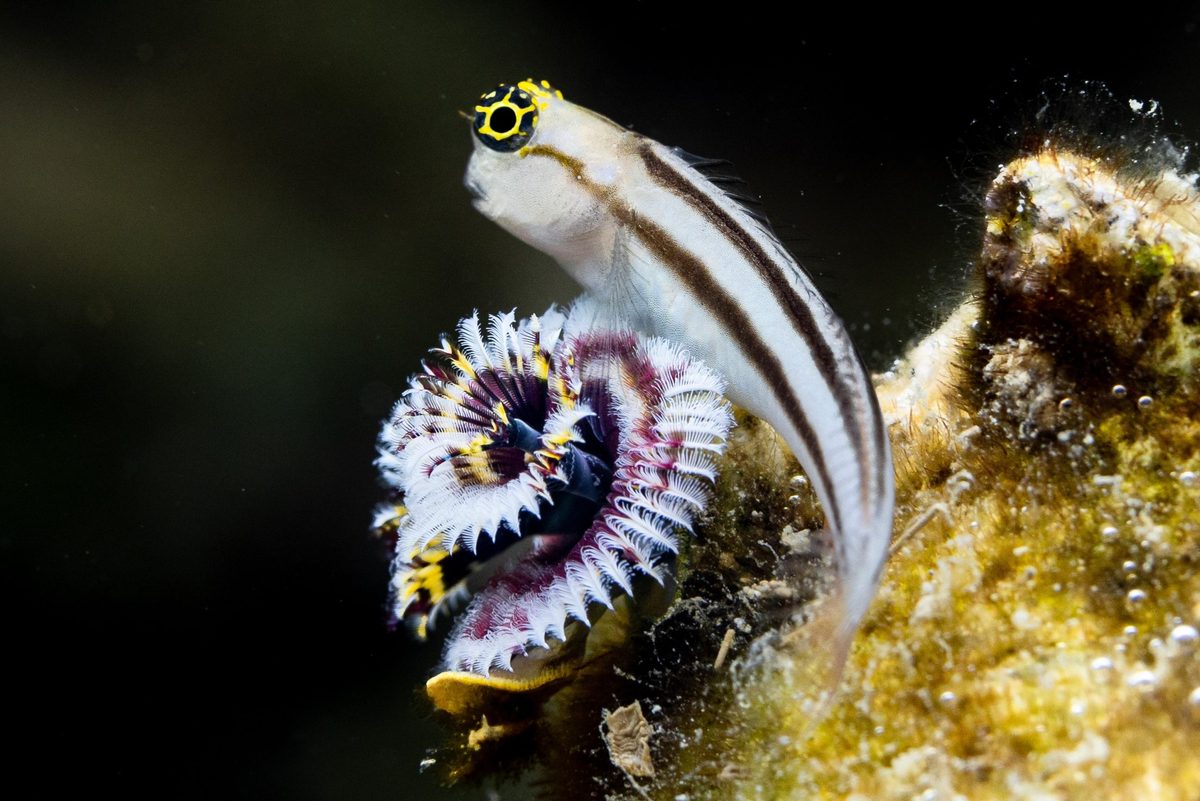Christmas tree worms, as you might guess from their festive name, are colourful reef critters that look like tiny Christmas trees. But when potential danger gets too close – whoosh – these shy little worms vanish back into their burrows.
But one marine scientist noticed that when certain fishes sit on top of them, they don’t vanish. He thinks this might be a special symbiotic relationship between the two species. The findings have been published in the journal Symbiosis.
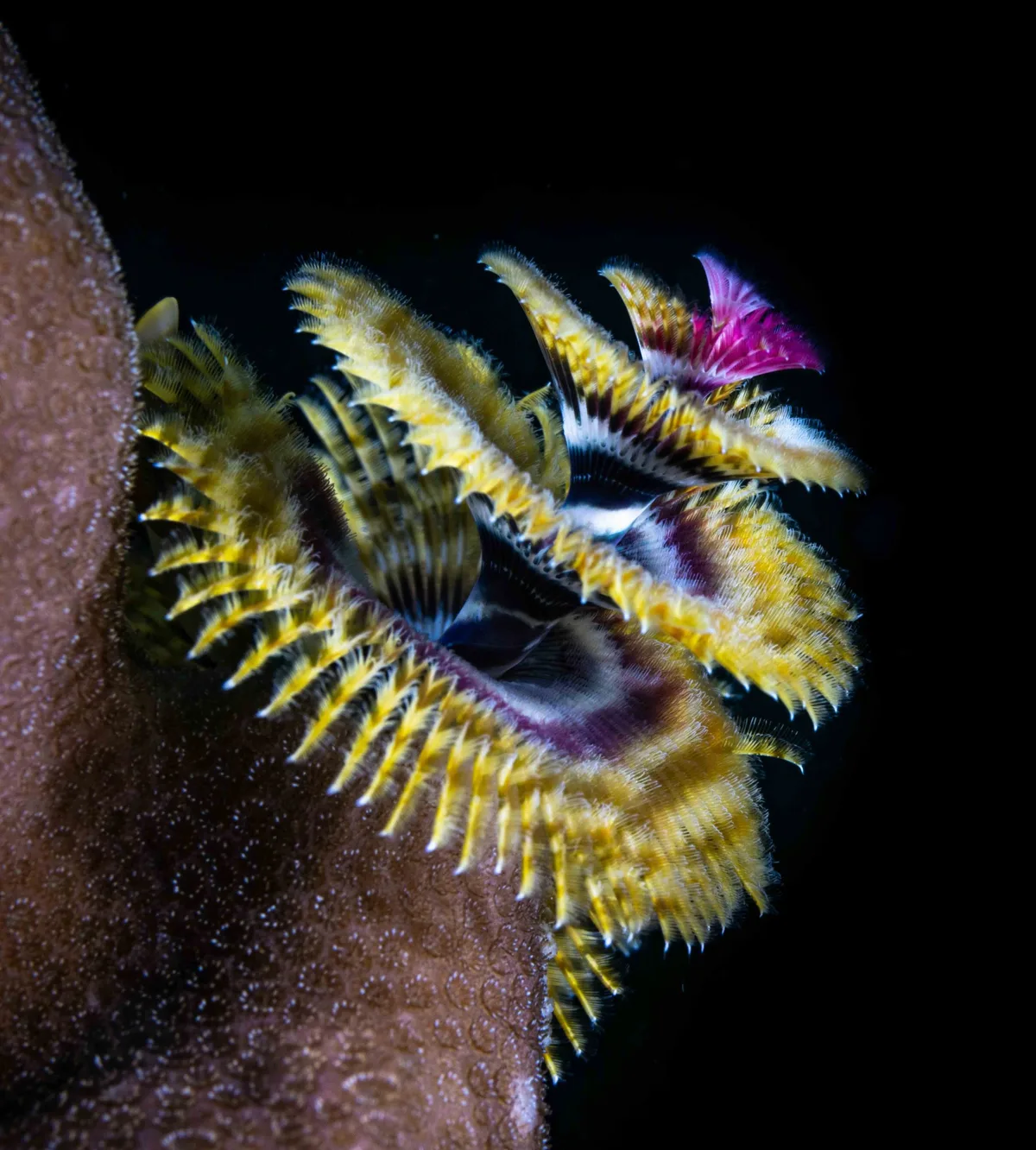
As an underwater photographer, the study’s lead author Morgan Bennett-Smith had spent hours watching these little polychaetes (marine worms) disappear like a puff of smoke whenever there was the slightest hint of a disturbance nearby. “I’d been filming them in slow motion to capture the instant they withdraw into their tubes,” he says.
“Then, during fieldwork for another project in Kimbe Bay, Papua New Guinea, I saw a fish just sitting on top of one of the worms… and the worm didn’t flinch,” he adds. “After seeing countless worms vanish at the slightest shadow, this was bizarre.”

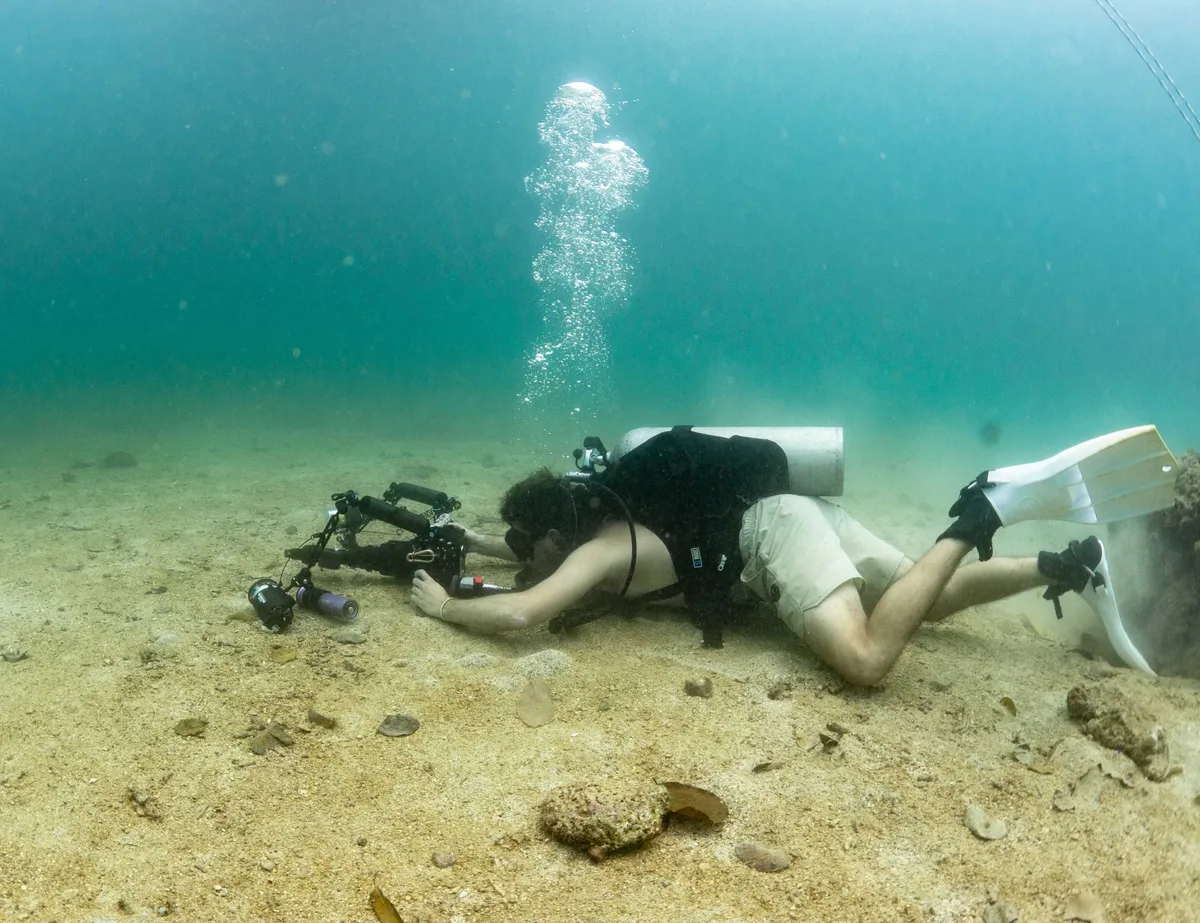
The more he looked, the more he spotted this strange interaction. When blennies (Blenniidae) or gobies (Gobiidae) were resting daintily on top, the Christmas tree worms (Spirobranchus corniculatus) didn’t recoil like they usually do when sensing potential danger.
These small, agile fishes are “experts at tucking into crevices or perching on small structures,” says Bennett-Smith who is a Ph.D. student at Boston University. They often have a small territory and spend a lot of time in one specific spot so sitting on top of the little ‘trees’ could give them a better vantage point.
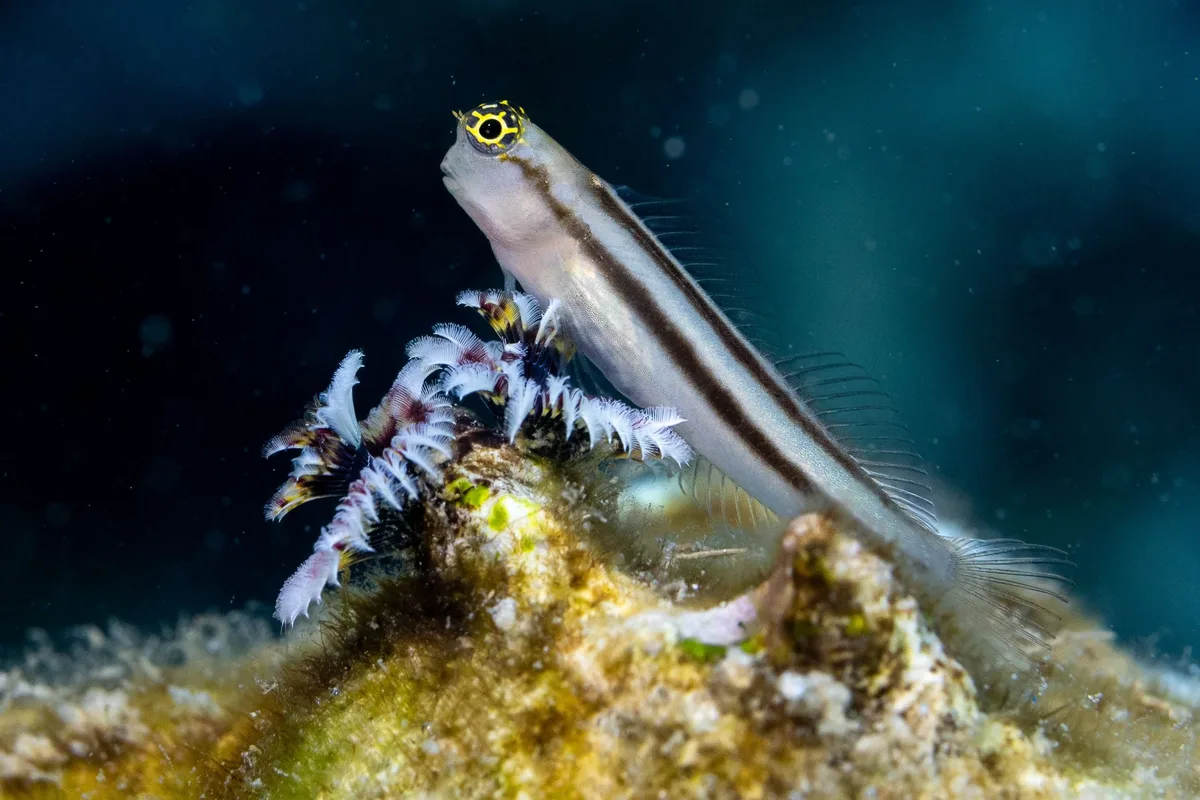
Gobies are already familiar with the concept of teamwork with other species as these fishes are known to form symbiotic relationships with other animals, including shrimps. “The shrimp digs and maintains a burrow while the goby acts as a lookout,” says Bennett-Smith.
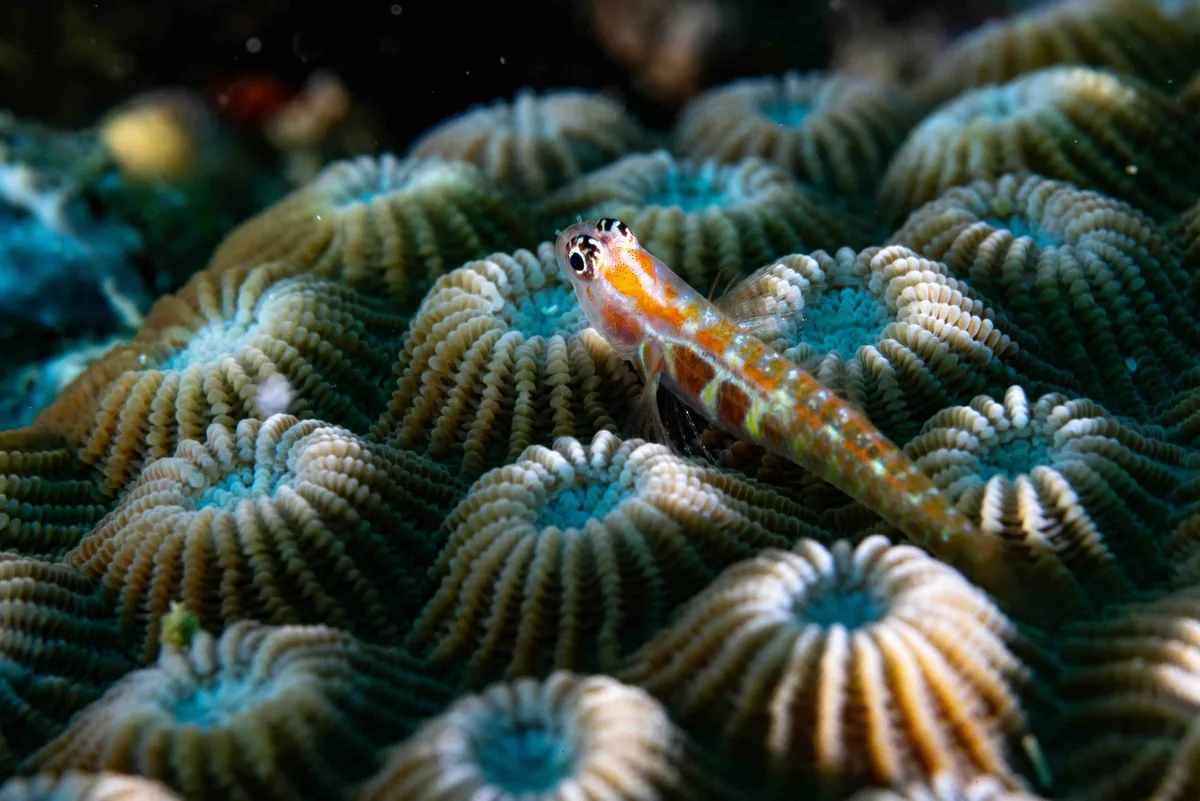
Because of the lack of response from the colourful worms, Bennett-Smith wonders if this relationship might have mutual benefits for the different species. “The fish may provide a service, such as removing algae or detritus from around the worm’s tube, and in return, the worms stay extended, offering the fish a perfect vantage point and camouflage,” he says, noting that they did see some behaviours that looked like cleaning.
Another possibility is that the worms gain nutrients and protection from the blennies and gobies. “The fish’s waste products could benefit the worms,” he says. “Some blennies are also known to be territorial and might chase away worm predators.”
There is another reason the worms might not withdraw when these fishes land on top, although it’s less likely says Bennett-Smith: “The other possibility is that the fish have simply figured out how to bypass the worms’ defences and are tolerated ‘uninvited guests’,” he says. “The truth is we don’t yet know, and we’d love to test these ideas further in the field!”
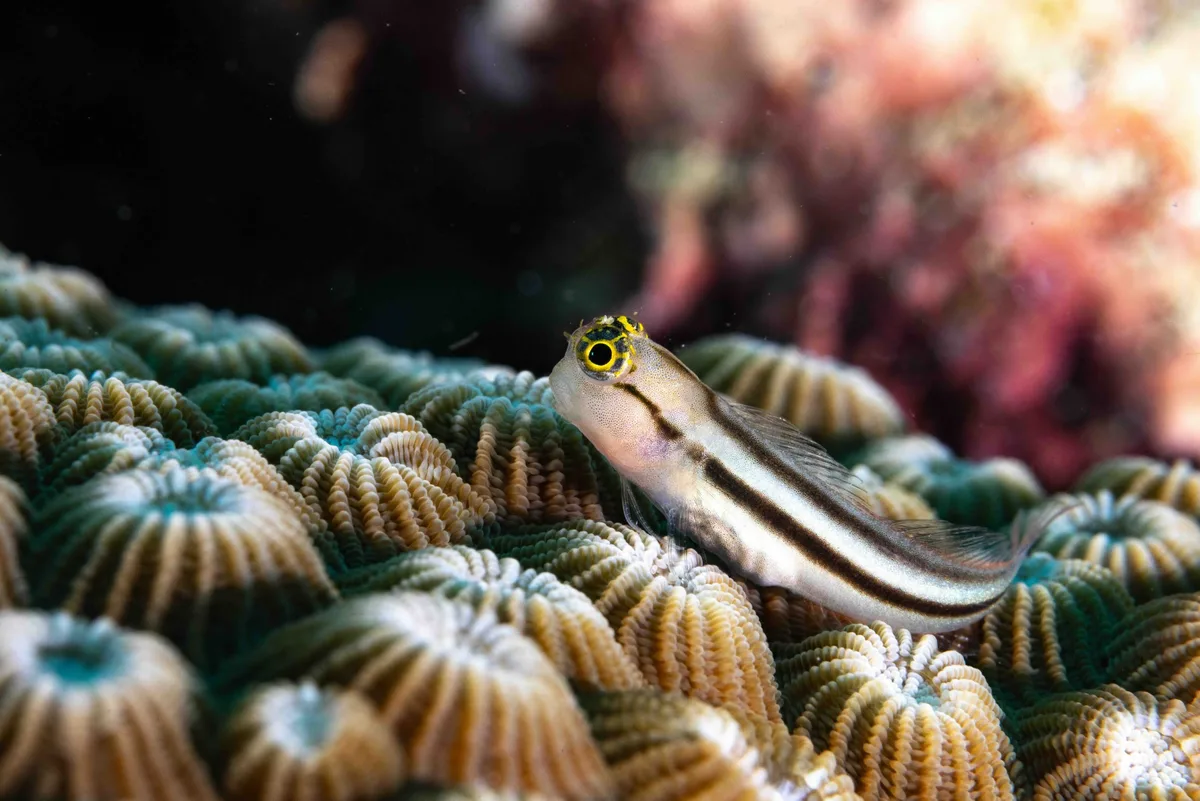
Although we’re learning more about the ocean every day, this new discovery of yet another example that fascinating findings could be unfolding right in front of our eyes, if we notice them. Although technology can be helpful, we can still learn a lot just by looking.
“I think there’s still huge value in simply being present in an ecosystem and watching, really watching, until patterns emerge,” says Bennett-Smith. “That’s when you sometimes notice the surprising, often overlooked relationships that help shape ecosystems.”
“There’s still so much we don’t know about coral reefs, even after decades of research,” he adds. “Many interactions like this may be happening all the time, unnoticed, just because we haven’t been watching closely enough.”
Top image: blenny and Christmas tree worms. Credit: Morgan Bennett-Smith, Boston University | www.bennettsmith.media
More amazing wildlife stories from around the world
